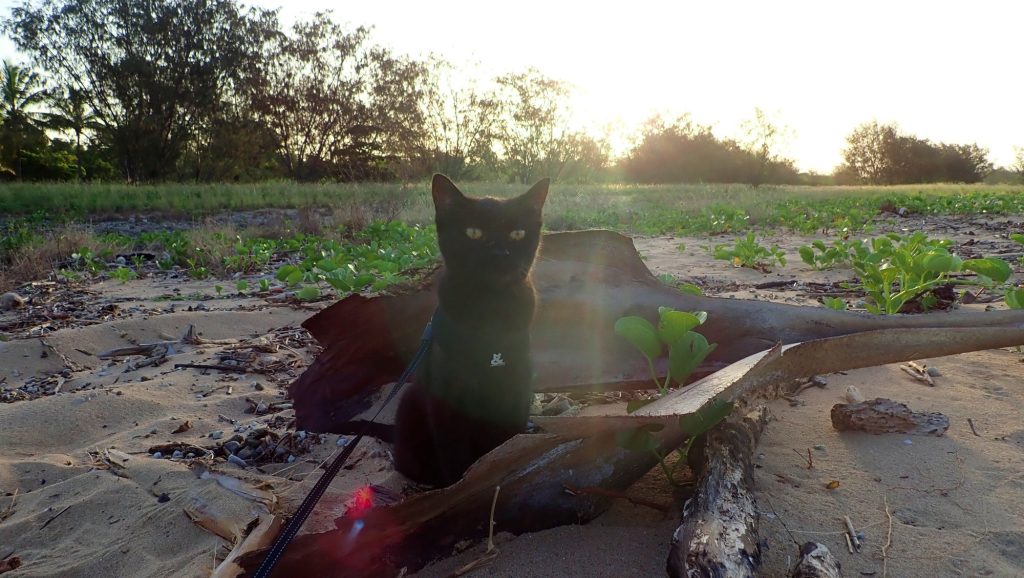Chalifoux, Nolan V., Rebecka S. Hess, and Deborah C. Silverstein. “Effectiveness of intravenous fluid resuscitation in hypotensive cats: 82 cases (2012–2019).” Journal of Veterinary Emergency and Critical Care (2021).
Background
This study was a retrospective study, designed to evaluate the responsiveness of hypotensive cats presented to an emergency centre, to resuscitation with intravenous fluids.
The reason the study is interesting is that despite reliance on intravenous fluid therapy to manage hypotension in emergency patients, there is little evidence-based research on the safety and efficacy of intravenous fluid resuscitation in cats, beyond experimental studies in anaesthetised patients.
Study Design
The records of cats admitted to the Ryan Veterinary Hospital at the University of Pennsylvania were evaluated and selected if they met inclusion criteria. For the purposes of the study, hypotension was defined as a systolic arterial blood pressure of less than 90 mm Hg.
Patients were classified as responsive to intravenous fluid therapy administration for management of hypotension if their post-treatment systolic arterial blood pressure was greater than 90 mm Hg; and were classified as non-responders if post-treatment systolic arterial blood pressure was less than 90 mm Hg.
In addition, the authors looked at other variables in the patients, including heart rate and body temperature, both before and after fluid resuscitation, as well as survival to discharge from hospital.
Fluid Therapy Interventions
The total volume of fluid given to the patients in this study varied between the patients, with the majority receiving isotonic crystalloids (median total volume 20 ml/kg), and a small number receiving either a combination of isotonic crystalloids and synthetic colloids (median colloid volume 6 ml/kg), or a combination of hypertonic saline (median volume hypertonic saline 3 ml/kg) and synthetic colloids (median colloid volume 6 ml/kg).
The mean total volume of fluids administered in all cats was 20 ml/kg (range 4-75 ml/kg).
No cat received vasopressor therapy at the time of fluid resuscitation.
The Results
- Blood pressure
- The median systolic arterial blood pressure before fluid therapy was 65 mm Hg (range 20-85 mm Hg)
- The median systolic arterial blood pressure after fluid therapy was 80 mm Hg (range 20-128 mm Hg)
- Heart rate
- The mean heart rate before fluid therapy was 159 +/- 48/min
- The mean heart rate after fluid therapy was 154 +/- 38/min
- Prior to fluid resuscitation
- 48% of cats were bradycardic
- 10% of cats were tachycardic
- 43% of cats had a normal heart rate
- Following fluid resuscitation
- 50% of cats were bradycardic
- 4% of cats were tachycardic
- 46% of cats had a normal heart rate
What the Results Mean
The results of this study demonstrate the following:
- Intravenous fluid bolus therapy for treatment of hypotension in cats effectively increases systolic arterial blood pressure
- Despite increasing systolic arterial blood pressure, in this study, bolus fluid therapy for treatment of hypovolaemic shock did not result in normalisation of blood pressure in the majority of cats.
- The volume of intravenous fluids administered in this study was quite small (20 ml/kg), and it is possible that additional fluid therapy may have resulted in further increases in systolic arterial blood pressure.
- There was no association between increasing systolic arterial blood pressure by more than 20 mm Hg over baseline levels, and survival in this study. However, a previous study did show an improvement in survival with an increase in systolic arterial blood pressure of greater than 20 mm Hg during hospitalisation. Further studies, using larger numbers of patients are required to better inform these observations.
- Heart rate did not change significantly between pre- and post-fluid bolus therapy. Bradycardia in cats is a common finding in shock, owing to a raft of local and systemic cardiovascular feedback systems triggered during hypovolaemic shock, and it might be expected that an increase in heart rate should occur once hypovolaemia resolves. It is possible that further intravenous fluid boluses may have resulted in significant change in heart rate not demonstrated by this study.
This study highlights the need for future prospective studies to evaluate several outcomes following intravenous fluid therapy for hypotension, including
- Whether additional fluid volume is an effective means of normalising systolic arterial blood pressure in hypotensive cats
- Whether additional fluid volume has a significant effect on heart rate in hypotensive cats
- Whether increasing systolic arterial blood pressure in cats greater than 20 mm Hg over baselines values in hypotensive cats results in improved survival chance
References
Chalifoux, Nolan V., Rebecka S. Hess, and Deborah C. Silverstein. “Effectiveness of intravenous fluid resuscitation in hypotensive cats: 82 cases (2012–2019).” Journal of Veterinary Emergency and Critical Care (2021).
Silverstein DC, Wininger FA, Shofer FS, King LG. Relationship between Doppler blood pressure and survival or response to treatment in critically ill cats: 83 cases (2003-2004). Journal of the American Veterinary Medical Association. 2008;232(6):893-897





















